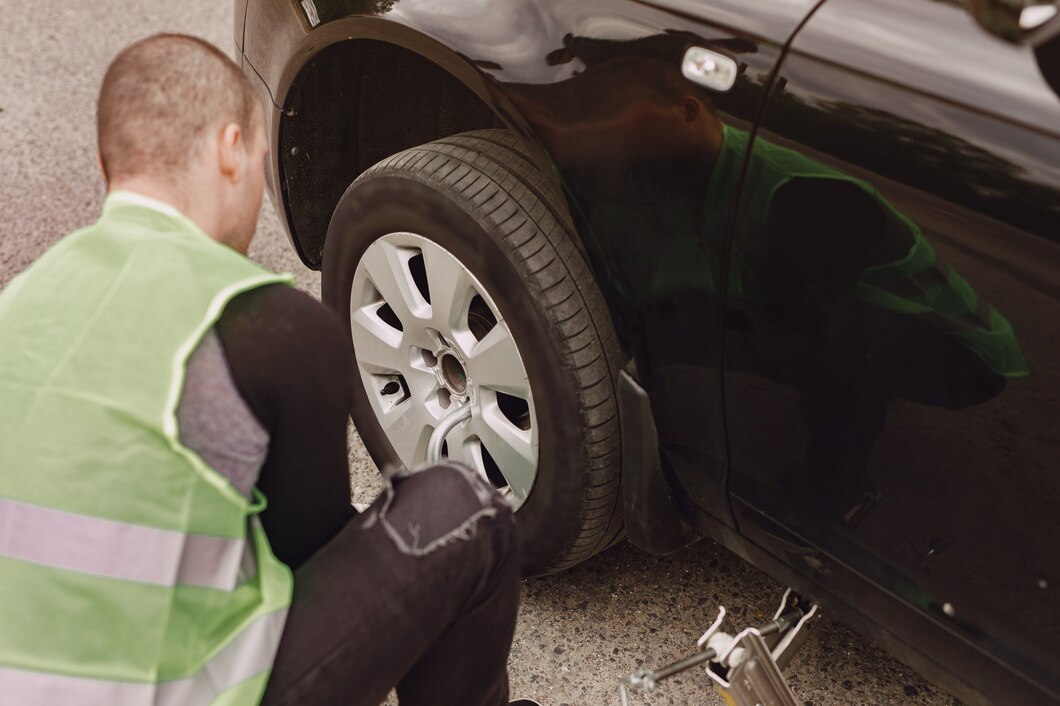Maintaining proper tire pressure is essential for vehicle safety, performance, and fuel efficiency. Underinflated tires can lead to various problems, including increased tire wear, reduced handling, and even blowouts. Recognizing the early signs of low tire pressure can help you take corrective action before it leads to more serious issues. Here are the key indicators that your car’s tire pressure might be too low:
1. TPMS Warning Light:
Many modern vehicles are equipped with a Tire Pressure Monitoring System (TPMS). If the TPMS warning light illuminates on your dashboard, it indicates that one or more of your tires have significantly low pressure. It’s essential to check your tire pressure immediately when this light comes on.
2. Poor Fuel Economy:
Underinflated tires create more rolling resistance, making the engine work harder and consume more fuel. If you notice a sudden decrease in fuel efficiency, it could be due to low tire pressure. Regularly monitoring your fuel consumption can help you detect this issue early.
3. Uneven or Rapid Tire Wear:
Low tire pressure can cause uneven tire wear, particularly on the edges of the tread. If you observe that the outer edges of your tires are wearing down faster than the center, it’s a sign that your tires may be underinflated. Consistent tire inspections can help you spot this problem.
4. Poor Handling and Stability:
Underinflated tires can negatively impact your vehicle’s handling and stability. You might notice that your car feels sluggish or unresponsive when steering, particularly during turns or lane changes. Additionally, your vehicle may sway or feel less stable, especially at higher speeds.
5. Increased Stopping Distance:
Low tire pressure can reduce the effectiveness of your brakes, leading to increased stopping distances. If you find that your car takes longer to come to a complete stop, it could be due to underinflated tires. This is particularly dangerous in emergency braking situations.
6. Vibrations or Thumping:
Driving on underinflated tires can cause vibrations or a thumping sensation, especially at higher speeds. These vibrations occur because the tires are not maintaining proper contact with the road surface. If you feel unusual vibrations, it’s a good idea to check your tire pressure.
7. Visual Appearance:
A quick visual inspection can often reveal underinflated tires. If your tires appear visibly low or flatter than usual, it’s a clear sign that they need more air. Compare the appearance of all four tires to ensure uniform pressure.
8. Pulling to One Side:
If your car pulls to one side while driving, it could be due to uneven tire pressure. Underinflated tires can cause your vehicle to drift or pull in one direction, making it difficult to maintain a straight line. This issue can also indicate misalignment, so it’s essential to check both tire pressure and alignment.
9. Increased Tire Temperature:
Underinflated tires can overheat due to increased friction and rolling resistance. After driving, if you notice that your tires feel excessively hot to the touch, it could be a sign of low tire pressure. Overheating tires are more susceptible to blowouts and other failures.
10. Decreased Ride Comfort:
Low tire pressure can lead to a bumpier and less comfortable ride. You may notice that your vehicle feels rougher over bumps and potholes. Properly inflated tires provide better cushioning and improve overall ride quality.
Preventive Measures and Solutions:
- Regularly Check Tire Pressure: Use a reliable tire pressure gauge to check your tire pressure at least once a month and before long trips. Make sure to check the pressure when the tires are cold, as driving can increase tire temperature and pressure readings.
- Follow Manufacturer Recommendations: Refer to your vehicle’s owner’s manual or the sticker inside the driver’s door for the recommended tire pressure levels. Maintaining the correct pressure ensures optimal performance and safety.
- Inspect Tires for Damage: Regularly inspect your tires for signs of damage, such as cuts, punctures, or bulges. Damaged tires can lose air more quickly and are at higher risk of failure.
- Rotate Tires Regularly: Rotating your tires helps ensure even wear and extends their lifespan. Follow your vehicle manufacturer’s recommended rotation schedule.
- Invest in a TPMS: If your vehicle doesn’t have a built-in TPMS, consider investing in an aftermarket system. TPMS can alert you to low tire pressure before it becomes a significant issue.
Maintaining proper tire pressure is vital for your safety and the overall performance of your vehicle. By recognizing the early signs of low tire pressure and taking proactive measures, you can avoid potential problems and ensure a smoother, safer driving experience. Regular maintenance and vigilant monitoring are key to keeping your tires in optimal condition.











